How to Maintain The Car And Truck Batteries
How to Maintain The Car And Truck Batteries
The electrical energy required to turn on the ignition and keep the automobile running is stored in the car battery. There are several methods you can use to keep your battery in good operating condition because you obviously want to avoid becoming stranded because of a dead battery. Maintain fluid levels, tighten the hold-down, insulate the battery against the cold, and clean it frequently. Drive the vehicle frequently, and unplug any appliances while the vehicle is not in use, to preserve the charge. Your battery may last 5 to 7 years with proper maintenance.
Never let the battery in your Cars and Trucks fall victim to the “out of sight, out of mind” syndrome.
A car battery has to be maintained. It requires some level of care and maintenance, much like many other components of a vehicle, to operate as it needs to. We are here to guide you through all the details that How to Maintain The Car And Truck Batteries.
Cleaning Battery Terminals with Baking Soda
Apply water and baking soda to the battery terminals to clean them. Find the red cap on the positive side of the battery to start. Never connect the positive side before the negative.  Lift the wire up and counterclockwise rotate the bolt holding the wires to the negative terminal. Make sure you don’t contact the two wires to any metal components of the automobile while you do the same with the positive side. then combine baking soda and water in a 1:1 ratio. Scrub both battery terminals with the solution after dipping a stiff-bristle brush into it.
Lift the wire up and counterclockwise rotate the bolt holding the wires to the negative terminal. Make sure you don’t contact the two wires to any metal components of the automobile while you do the same with the positive side. then combine baking soda and water in a 1:1 ratio. Scrub both battery terminals with the solution after dipping a stiff-bristle brush into it.
If dirt and debris enter the battery’s cells, it might be terrible news for your battery. Cleaning the top of the battery and the area around the terminals is crucial as part of your auto battery maintenance since it can also cause corrosion on neighboring metal.
To get rid of any remaining corrosion and crust on the battery, use our Electrical Contact Cleaner with a wire brush or mix baking soda and water to make your own cleaning solution. Don’t forget to remove any cleaning agent residue from the battery so that it won’t leak through the battery ports and harm the ports.
You can also use Noco Battery Cleaner which is available on Amazon Noco is one of the best electrical contact cleaners available in the market.
- When you are through, clean the terminals with a moist cloth.
- When you’re done, don’t forget to properly reconnect the batteries. The positive terminal should always be connected first.
- The performance and longevity of the battery are hampered by corrosion and rust on the terminals.
The acid level should be checked Regularly
It is very important to keep an eye on the acid level in your battery, especially if it is an older, maintenance-intensive battery. By removing the cell caps (if necessary) and confirming that the battery’s plates are completely immersed, you may check the electrolyte levels. To keep the cells’ fluid levels at the prescribed levels, top them out as necessary with distilled water. Don’t overfill containers; doing so can cause acid overflow and corrosion.
Fill them up with distilled water if you find that the electrolyte levels are low (the plates will be visible). Use caution and only fill the cells to the level of the plates. For adding water, a funnel or sports bottle works best because you can control the flow. After topping off the water, recharge the battery using a battery charger.

- Depending on driving patterns and weather, lead-acid batteries should have their acid levels checked every three to six months.
- Start by donning the proper safety equipment, such as gloves and safety goggles, to guard against any acid exposure.
- Prior to attempting to check the battery acid level, park your car somewhere that is well-ventilated.
- Using a wrench or other appropriate instrument, carefully remove the battery’s caps or covers, being careful not to leak any acid.
- Check the battery cells to determine the acid content. Each cell should have enough acid to cover the lead plates within.
- Carefully add distilled water to any cell with low acid levels to raise them to the ideal level. Use bottled water only since tap water may have contaminants that might damage the battery.
- To pour the distilled water gradually and prevent overfilling the cells, use a plastic funnel or a watering device designed especially for batteries.

You can also use the Battery Acid Level Indicator Device to check the power of your vehicle battery power.
- Once the acid levels have been topped off in each cell, replace the caps or covers firmly.
- To avoid corrosion, clean up any acid or water that has gotten on the battery or nearby surfaces.
- Make sure the battery terminals are corrosion-free and spotless. If required, clean them with baking soda and water or a battery terminal cleaner.
- To make sure there is a firm connection, tighten the battery connections.
- If your car isn’t used frequently, you might want to use a battery maintainer or charger to keep the battery healthy.
- To create a routine maintenance schedule, keep a record of the times you checked the battery acid levels.
Battery Load Test
To guarantee the health and lifespan of your car’s battery, a battery load test is an essential part of periodic maintenance. This test simulates the conditions the battery encounters when starting your car to evaluate the battery’s capacity to supply electricity under load. A battery load test is a simple procedure that may be completed at home or by a qualified mechanic.
Every month, you should do a battery load test, which may be done by a professional, for thorough automobile battery care.
The load tester will offer a reading following the test. While under load, a healthy battery should maintain a voltage level over a certain threshold. A weak or failing battery may need to be replaced if the voltage lowers noticeably or dips below the acceptable level.
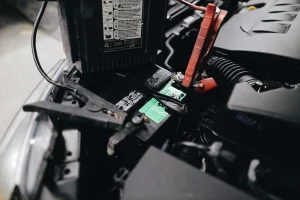
The outcomes of the load test might provide important details regarding the health of your battery. The battery is probably in excellent condition if it passes the test. If it doesn’t work, the battery is obviously no longer able to provide the necessary energy to reliably start your car.
- A battery’s capacity to provide electricity under load is tested using a battery load test.
- Connect the positive and negative leads of a load tester to the battery terminals.
- Start the test as directed by the load tester, imitating engine startup circumstances.
- A failing battery indicates a weak or failing battery that has to be replaced.
- Regular load testing helps assure battery reliability and prevent unexpected failures.
- For the best battery care, combine load testing with additional maintenance procedures like monitoring the acid level and cleaning the terminals.
Coat The Battery Terminal to Prevent Corrosion
In order to avoid corrosion and guarantee that the electrical connections stay squeaky clean and effective, coating the battery terminals is an essential part of battery maintenance. Because of the chemical processes that take place while a battery is operating normally, the terminals are vulnerable to corrosion. Applying a specialized terminal protector or a cost-effective do-it-yourself solution like petroleum jelly or dielectric grease will safeguard them.
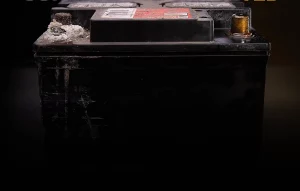
Start by unplugging the battery wires from the negative terminal, which is normally black, then move on to the positive terminal, which is typically red. To get rid of any corrosion or buildup, clean the terminals and cable ends using a solution of baking soda and water or a terminal cleaner. Apply a thin, uniform layer of the selected coating material to the terminals after cleaning and drying them.
This safeguarding layer serves as a barrier to moisture, halting the development of corrosion and guaranteeing a solid, trustworthy electrical connection. Make sure the battery wires are securely fastened as you reattach them, starting with the positive terminal and ending with the negative one. To prevent corrosion and increase battery life as well as the dependability of your car, regularly examine your battery terminals and reapply the coating as necessary.

You can also use the NOCO 2-STEP BATTERY CORROSION PREVENTATIVE to keep your cars, pick-up trucks, and RV batteries healthy.
- Use baking soda and water or a special cleaner to clean the battery connections.
- Remove cables (negative first), and carefully clean, and dry the terminals.
- Put on a layer of protection, such as petroleum jelly or dielectric grease.
- To stop moisture from getting inside, make sure a thin, equal coating is covering the terminals.
- Reattach the cables and make sure the connection is solid (positive first).
- The coating should be inspected and reapplied often to preserve electrical conductivity and avoid corrosion.
Keep the Batteries Cable Tied
Keep your cords properly fastened because they must stay put. Everything will be kept more securely as a result of this.
A critical component of maintaining the electrical system in your automobile and guaranteeing safety is securely fastening the battery wires. To avoid any touch with vibrating or potentially dangerous engine elements, battery wires should be tightly knotted. Start by visually evaluating the wires and their route to search for any potentially dangerous loose or dangling parts.
Make sure the wires are carefully routed away from hot or moving components by securing them in place with cable ties or specialized straps made for automotive usage. To prevent harm to the wires or insulation, avoid overtightening.
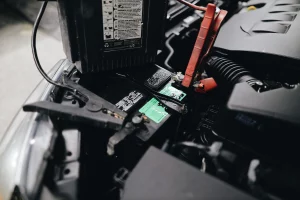
Check the ties or straps frequently to make sure they’re still in excellent shape because doing so not only protects the integrity of your electrical connections but also lowers the possibility of electrical shorts or other mishaps beneath the hood.
- Battery cables should be checked often for wear and damage.
- To keep cables in place, use cable ties or specialized straps.
- Make sure they are routed properly, keeping them away from hot or moving engine components.
- To prevent damaging wires or insulation, don’t overtighten.
- To ensure a safe connection and consistent tension, periodically inspect ties or straps.
Don’t Over-charge the Battery
It’s crucial to avoid overcharging your battery if you charge it manually because doing so might harm it. Every half an hour, check on the battery to see how it’s doing.
A critical component of battery care to be aware of is overcharging, which may have negative impacts on a car battery’s general health and longevity. A certain voltage range is required for charging and discharging car batteries. Overcharging a battery results in the electrolyte heating up excessively, which can cause water to evaporate and battery parts to disintegrate.
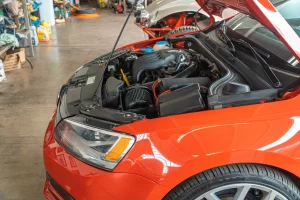
This not only lowers the battery’s capacity but also increases the chance of an explosion and the emission of hazardous chemicals. Use an appropriate charger with an automatic shut-off option or a smart charger that can detect the battery’s charge level and regulate itself in order to avoid overcharging. Additionally, stay away from overcharging your battery by repeatedly jump-starting your car with another running vehicle.
- Battery health is harmed and lifespan is shortened by overcharging.
- A certain voltage range applies to car batteries; going beyond it might cause issues.
- Overcharging results in component failure, water evaporation, and electrolyte warming.
- Use a charger with automatic shut-off or a smart charger to prevent overcharging.
- When jump-starting, use caution since a lengthy charge may overload the battery
Don’t Leave Your car for too Long
The battery in your automobile might suffer greatly if it is left parked and unattended for a lengthy period of time. This is particularly true for contemporary automobiles outfitted with a variety of electronic devices that constantly consume a tiny amount of electricity, even while the engine is off. This continuous low-level discharge over time can progressively drain the battery, possibly to the point where it is unable to start the vehicle.
When leaving your automobile parked for a lengthy period of time, take these procedures to preserve the health of your battery. First, to recharge the battery, start your automobile if you can, and let it run for a few minutes every two to four weeks. As an alternative, you may spend money on a trickle charger or battery maintainer that will keep the battery charged when the car is not in use.

A professional or your owner’s handbook can provide help. Disconnecting the negative terminal of the battery will also stop parasitic power loss, although doing so may also reset several vehicle settings. By following these instructions, you can make sure that your car’s battery stays in good shape, avoiding unpleasant surprises when you’re ready to drive again.
- Inactivity over extended periods of time can cause battery drain.
- Electronic components in modern vehicles use electricity even when not in use.
- Every two to four weeks, start the automobile and let it run for a limited period of time to replenish the battery.
- For prolonged parking, think about utilizing a battery maintainer or trickle charger.
- While resetting the vehicle’s settings, disconnecting the battery may stop discharge.
Change The Battery At Right Time
To keep your automobile reliable and avoid unplanned failures, changing the battery at the correct time is essential. Car batteries have a limited lifespan that normally lasts between three and five years, however, this might change based on the temperature, driving behavior, and battery quality.
Waiting till your battery dies might result in uncomfortable circumstances and leave you stuck. Watch for warning signals like a slow engine start, fading headlights, electrical problems, or the ‘check battery’ warning light on your dashboard to know when it’s time to change your battery.
As part of normal maintenance or if you observe any of these symptoms, it’s also a good idea to get your batteries examined. An economical and prudent choice, proactive battery replacement guarantees that your car starts consistently and reduces the chance of being stuck due to a dead battery.

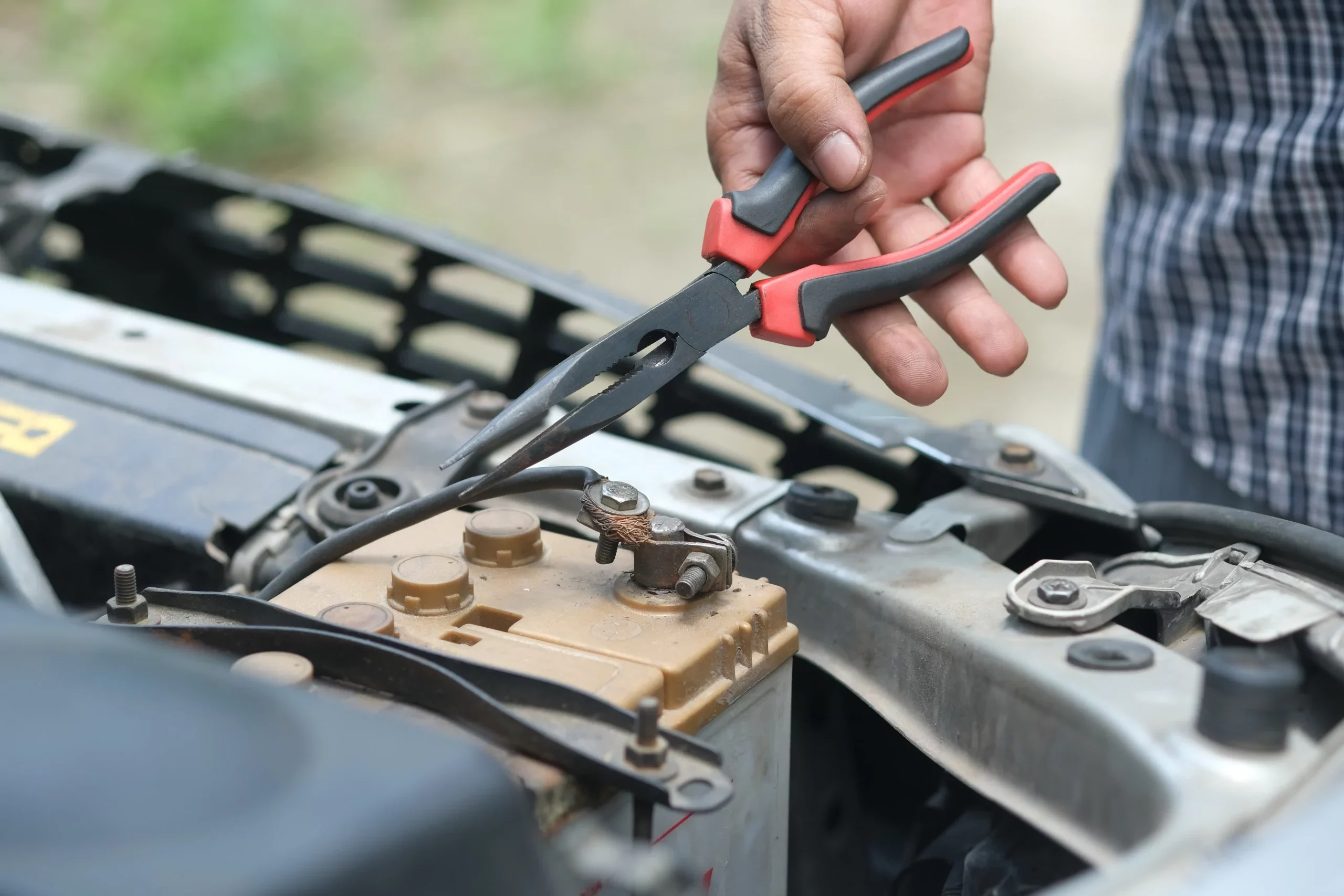
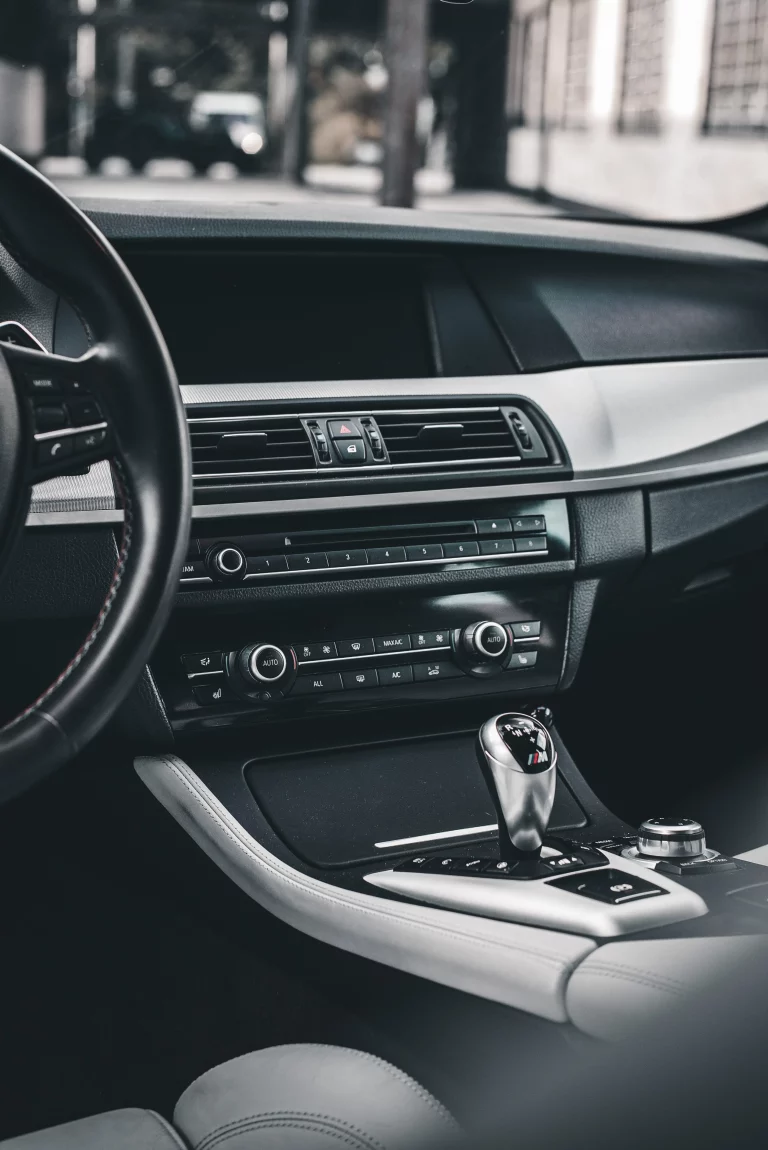
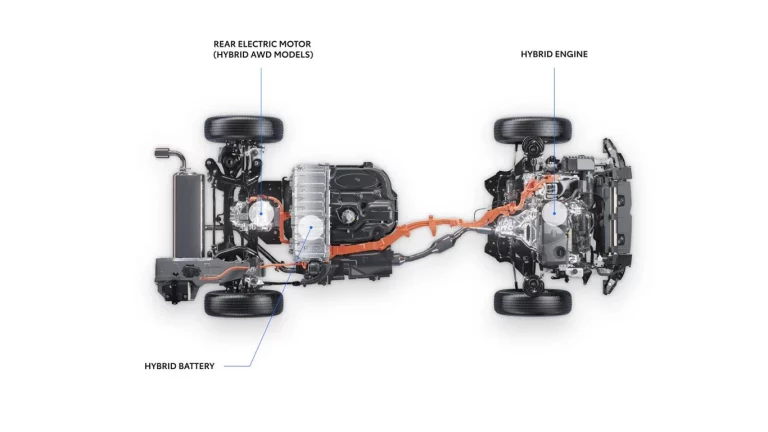
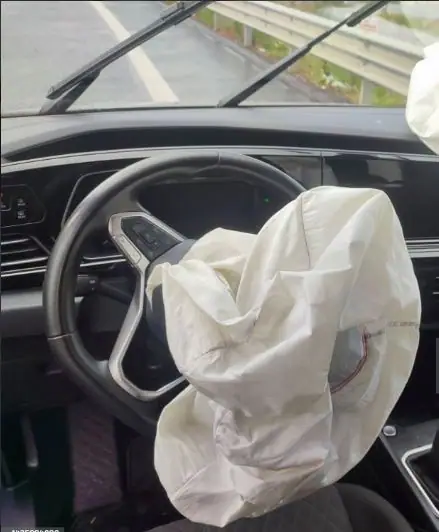
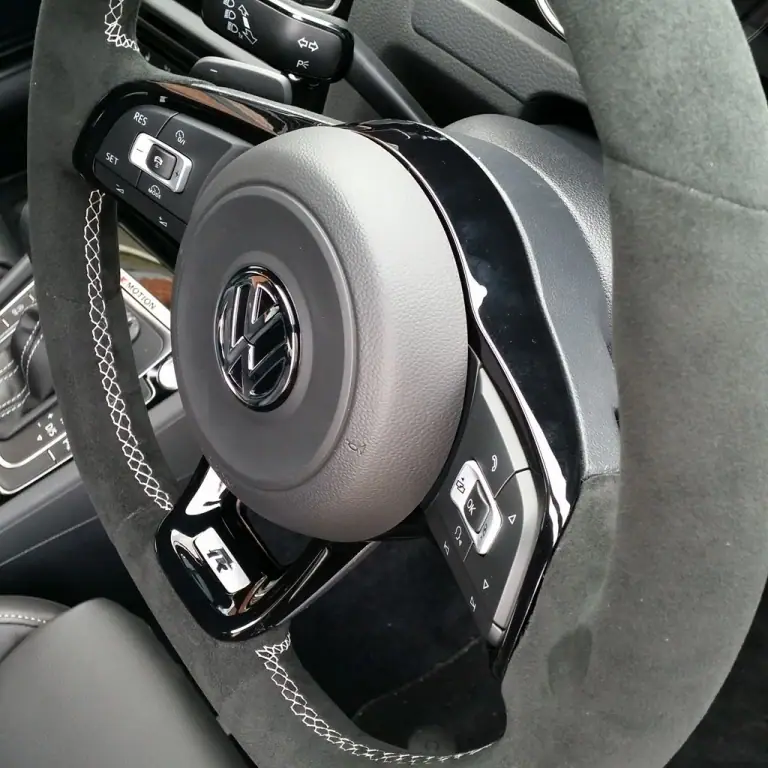

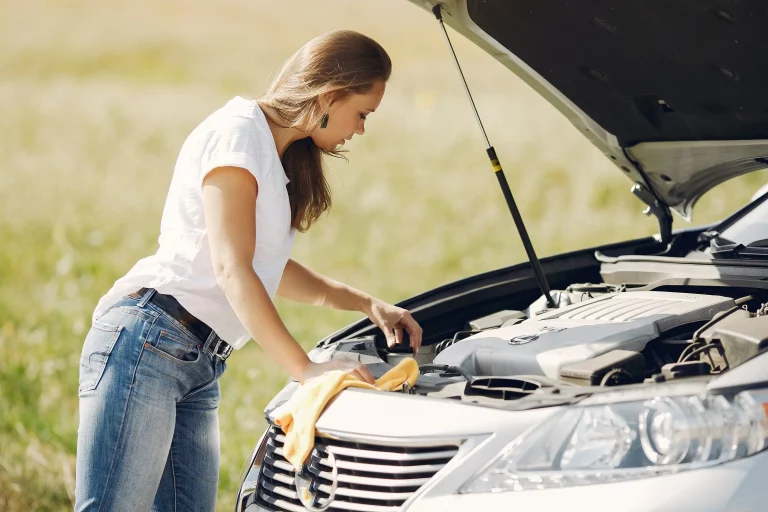
8 Comments